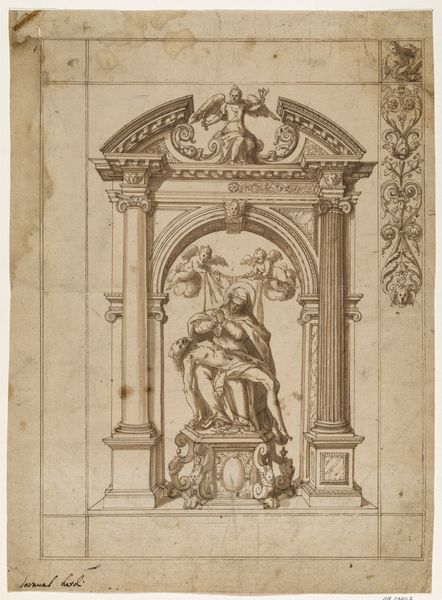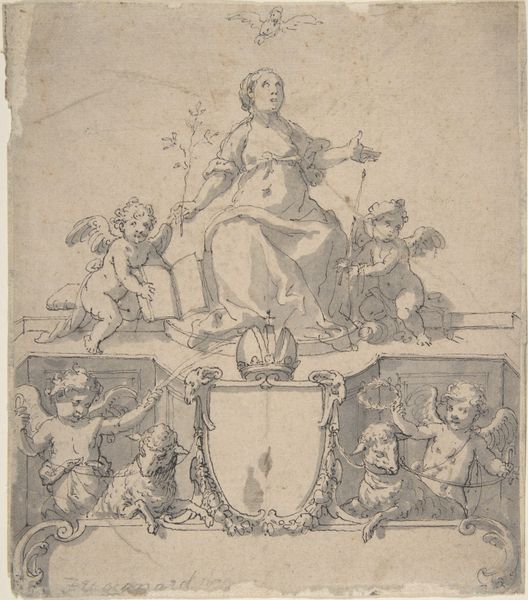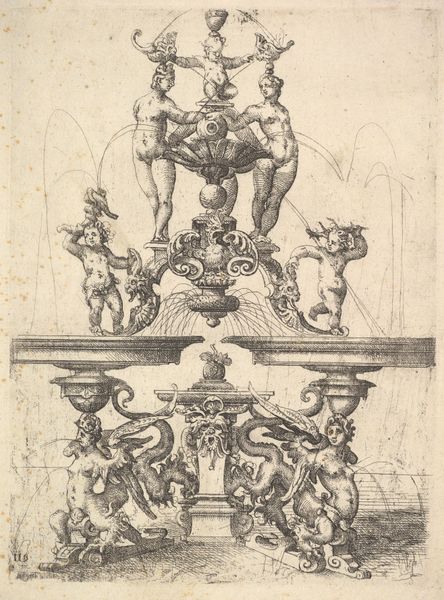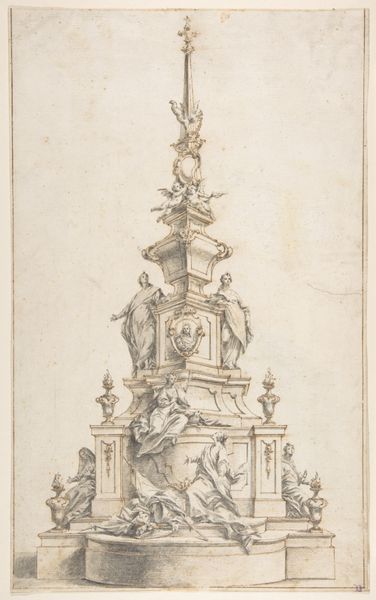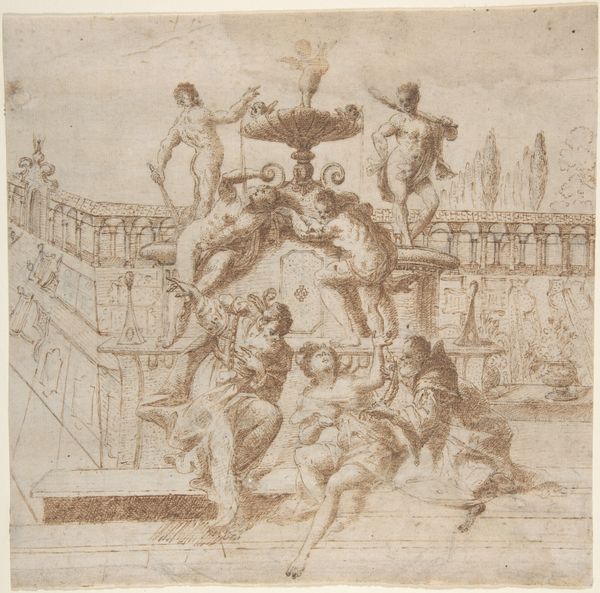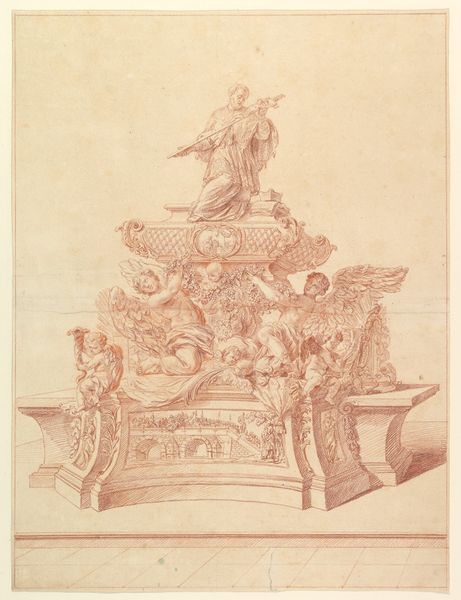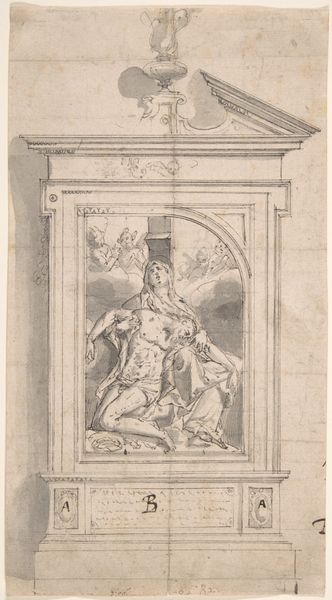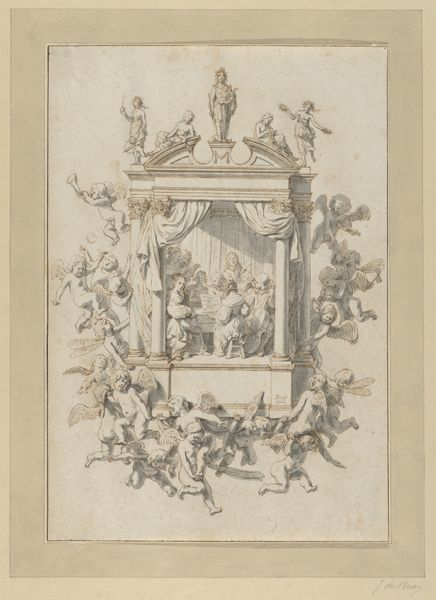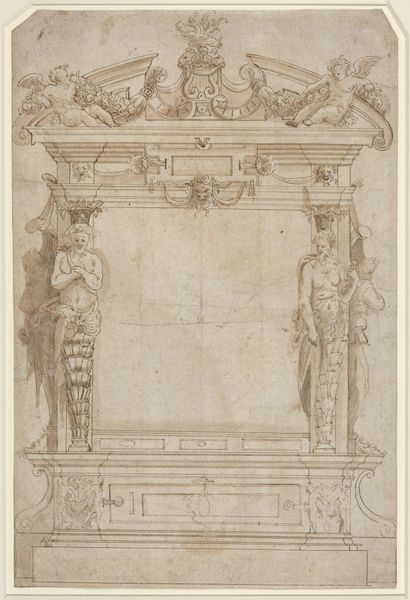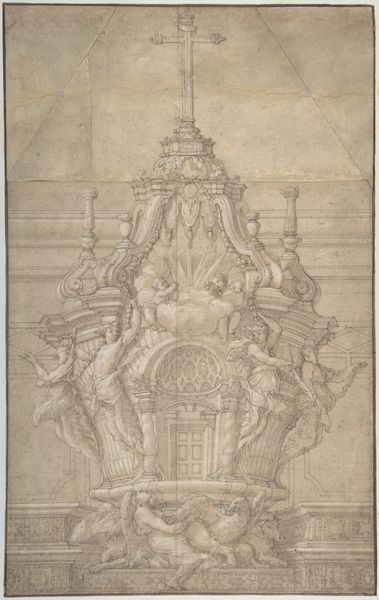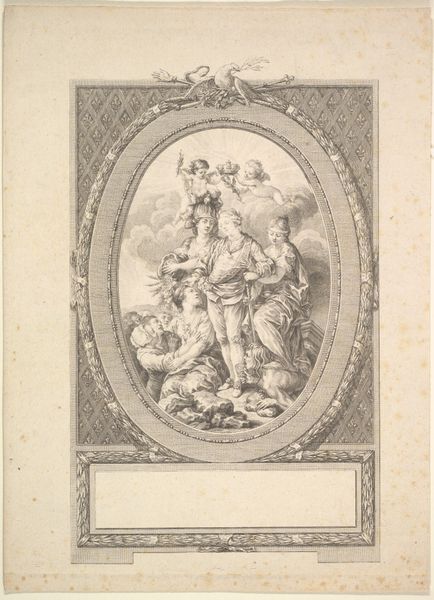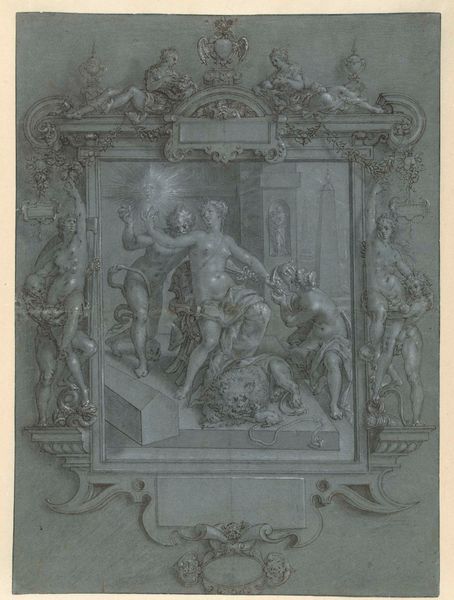
Design for a Fountain with Rivergods and Nymphs 1511 - 1574
0:00
0:00
drawing, print, pencil
#
drawing
# print
#
landscape
#
charcoal drawing
#
figuration
#
11_renaissance
#
pencil
#
italian-renaissance
Dimensions: sheet: 15 3/16 x 9 13/16 in. (38.6 x 25 cm)
Copyright: Public Domain
Editor: This drawing, "Design for a Fountain with Rivergods and Nymphs" attributed to Giorgio Vasari, dates back to sometime between 1511 and 1574, rendered in pencil, charcoal, and ink wash. It's striking how the artist used such limited materials to depict the extravagance of the fountain. What does this work communicate to you? Curator: From a materialist perspective, I'm drawn to the social and economic implications of its creation. The drawing is not merely a design, but evidence of a commission, of patronage. We have to ask who would demand, and who could afford, such a luxurious object as a multi-tiered fountain populated by river gods and nymphs? Editor: That’s a good point. It wasn't just about artistic skill, but about the entire network of power. Curator: Precisely. And consider the materials – paper, ink, charcoal. Relatively inexpensive compared to marble or bronze that the actual fountain would require. The drawing itself becomes a commodity, a representation of wealth and status to be circulated amongst potential clients. How does the choice of media shape our understanding of the object being represented? Is it a functional drawing or an object of art itself? Editor: So, you're saying that the drawing acts as a kind of advertisement? Meant to circulate the patron's aspiration and access? Curator: Exactly. And furthermore, we should ask who had access to these designs? Who was trained in drawing to bring these grand ideas to paper? Consider it from the point of view of the laborers who would construct the fountain; how might they understand this rarefied design compared to the person who commissioned it? Editor: Wow, that shifts the whole perspective! I was initially focused on the figures themselves but now I'm thinking about the socio-economic story embedded in the materials and the design's journey. Thanks, I hadn't considered all that! Curator: The materiality always reveals more than just surface aesthetics. It tells a story of labor, consumption and class.
Comments
No comments
Be the first to comment and join the conversation on the ultimate creative platform.
